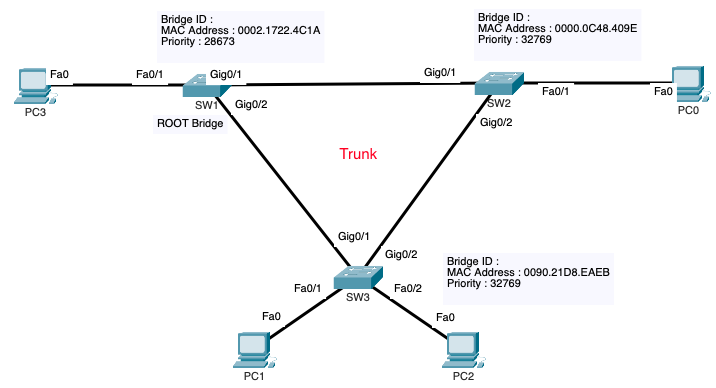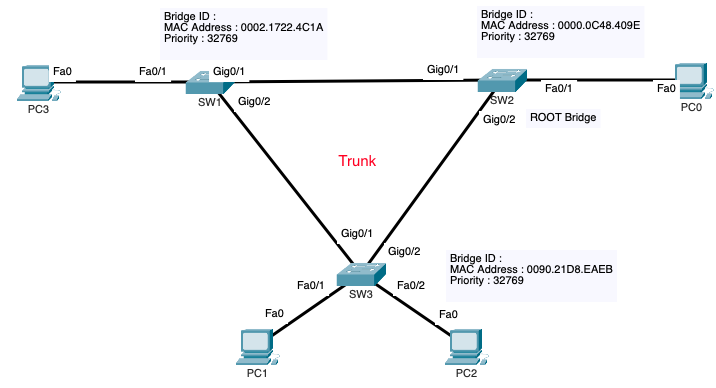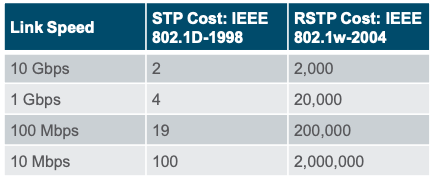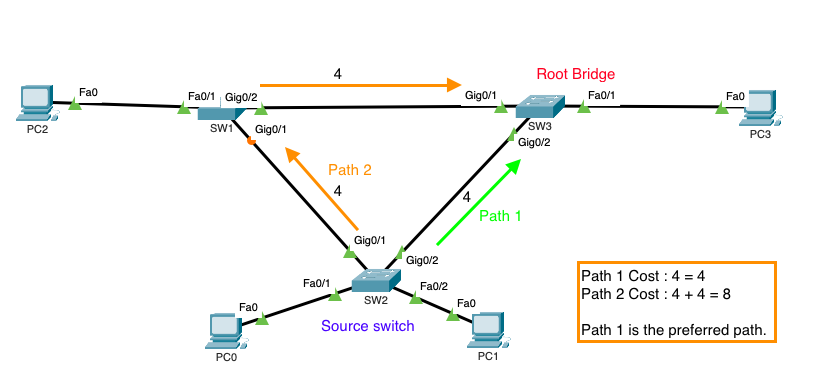Hello Everyone, in this article we’ll discuss about root bridge on spanning tree protocol. Root bridge are used for reference point for all path calculations on STP. So All of switch that connected are select layer 2 connection to the root bridge. Switch exchange BPDUs to build loop-free topology is beginning with selecting a Root Bridge.
Switch are participate on Broadcast network are send out the BPDU every two second. the BPDU frame are contain BID (Bridge ID) of the sending switch and BID of the Root Bridge also known as Root ID .
At first, all of the switches are declare themselves as a Root Bridge with their owh BID set as Root ID. After that the switches will learn through exchange of BPDUs which switch that has lowest BID will be a Root Bridge.
The Following are Example of election a Root Bridge. Lowest BID value depend of lowest priority of lowest mac address. First of value is priority value. If all of the switches have the same values then it calculates to lowest mac address for BID. Default priority on STP are 32768 but on cisco it will add extended system id (VLAN1 Assigment) is 1 so total of default priority is 32769.

Let see the STP topology with default BID (Default Priority). All of the switches has default priority and We can see SW2 is become a Root Bridge because SW2 have lowest MAC Address value.

Root Path Cost
When Switch has ben elected the root bridge. Root path cost are used to determine best path to the root bridge. Altough switch port have a default cost, but we can manually configured the cost value to control the spanning tree path to the root bridge. Here’s the spanning tree path cost on each interfaces speeds :

Here’s the example of path cost. let say the source switch is SW1 and Root Bridge is SW3. As the following capture we can see the comparation between path1 and path2. Because interfaces used are GigabitEthernet so stp cost is 4. Path1 is direct connect to root bridge that has total cost 4 to go to root bridge while path2 total cost are 8 so path 1 is preferred.
